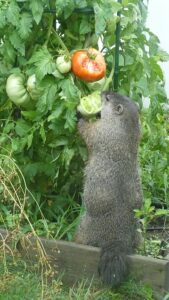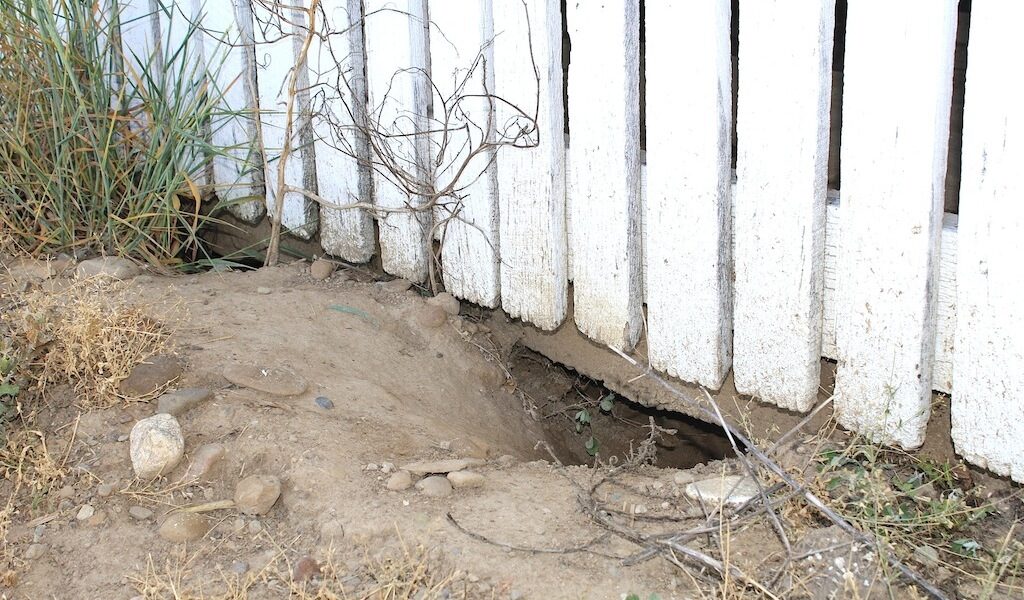Groundhogs
go.ncsu.edu/readext?913681
en Español / em Português
El inglés es el idioma de control de esta página. En la medida en que haya algún conflicto entre la traducción al inglés y la traducción, el inglés prevalece.
Al hacer clic en el enlace de traducción se activa un servicio de traducción gratuito para convertir la página al español. Al igual que con cualquier traducción por Internet, la conversión no es sensible al contexto y puede que no traduzca el texto en su significado original. NC State Extension no garantiza la exactitud del texto traducido. Por favor, tenga en cuenta que algunas aplicaciones y/o servicios pueden no funcionar como se espera cuando se traducen.
Português
Inglês é o idioma de controle desta página. Na medida que haja algum conflito entre o texto original em Inglês e a tradução, o Inglês prevalece.
Ao clicar no link de tradução, um serviço gratuito de tradução será ativado para converter a página para o Português. Como em qualquer tradução pela internet, a conversão não é sensivel ao contexto e pode não ocorrer a tradução para o significado orginal. O serviço de Extensão da Carolina do Norte (NC State Extension) não garante a exatidão do texto traduzido. Por favor, observe que algumas funções ou serviços podem não funcionar como esperado após a tradução.
English
English is the controlling language of this page. To the extent there is any conflict between the English text and the translation, English controls.
Clicking on the translation link activates a free translation service to convert the page to Spanish. As with any Internet translation, the conversion is not context-sensitive and may not translate the text to its original meaning. NC State Extension does not guarantee the accuracy of the translated text. Please note that some applications and/or services may not function as expected when translated.
Collapse ▲Groundhogs (known as woodchucks or whistlepigs by some) are the largest members of the squirrel family. They commonly can be seen browsing on the shoulders or rights-of-way of our roads here in the High Country from Spring through the end of Fall. Since they are vegetarians for the most part, with the occasional insect or worm in their diet, groundhogs can become a nuisance in the landscape if they decide to browse your plants or binge feed on your garden crops.
“Chunk, the Groundhog” has received a lot of attention on social media for his veggie theft antics.
More problematic, however, are their burrowing habits. Groundhogs can move hundreds of pounds of soil, and their tunnels can stretch over 40 feet in length and have multiple exits. By burrowing near and/or under the foundations of barns and houses, they can compromise the integrity of structures and even collapse driveways and patios.
A few ways to discourage groundhogs from your property include keeping your yard or property clear
of brush, since groundhogs like using this material to hide their tunnel entrances. They also like to grind their teeth on tree stumps, so it’s a good idea to remove stumps if you have groundhogs in your area. If you have a garden, to remove the potential attraction of a buffet line, harvest your crops as soon as you can and don’t leave too many ‘leftovers’ on the vine. Exclusion fencing can work for small home gardens and landscape areas but is not very practical for larger acreage. Groundhog exclusion fences (which would also keep other pests out, like rabbits) need to be electric, woven, or made of welded wire, and extend at least 3 to 4 feet tall (groundhogs CAN climb!) with a 45-degree angle at the top to discourage the animals from climbing over. This type of fence should also be buried 12 inches to 14 inches underground to prevent groundhogs from digging under it. NC State Extension Master Gardeners have a publication that addresses considerations for managing groundhogs and other problem critters in the landscape.
If you already HAVE a groundhog squatting on your property causing issues and not paying rent, it’s easiest to contact a wildlife damage control agent, who can assess the problem and either recommend a solution or trap and remove it. A list of wildlife damage control agents who cover Watauga County is available on the North Carolina Wildlife Resources Commission website.
Live-cage traps can be used to bait and capture, but trapped groundhogs legally cannot be relocated off site (which sort of defeats the purpose of this more humane option for removal). Since there is no closed season or bag limit on groundhogs, ‘hunting’ remains an option as well. If you have an adventurous palate, a Google search on ‘groundhog recipes’ is flush with stew, buttermilk fried, and other ways to prepare it.






